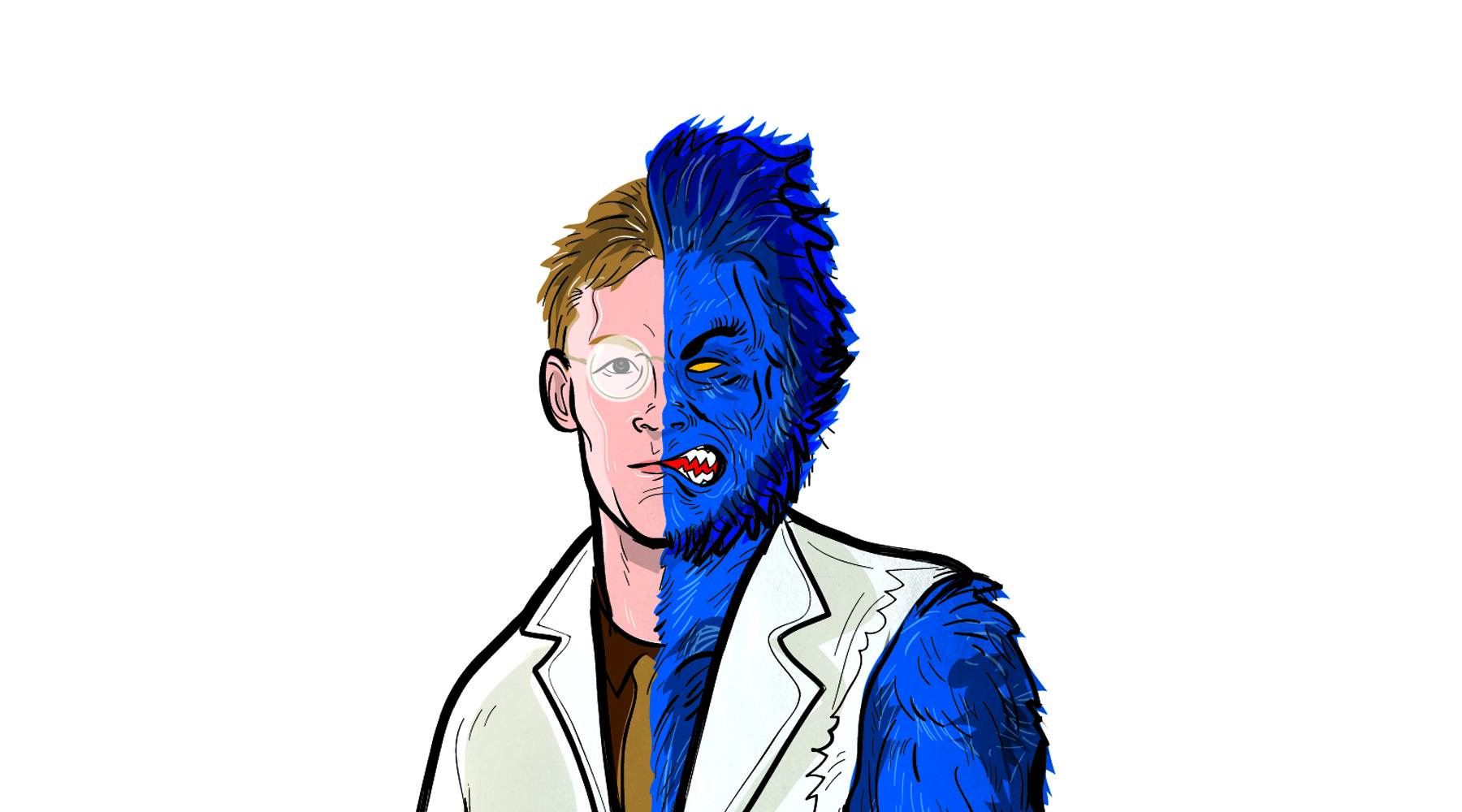This summer, Wolverine, Mystique, Storm and the rest of the Marvel superhero gang invaded movie theaters in “X-Men: Days of Future Past.” Their task: Stop a group of robots programmed to hunt and destroy mutants.
Sounds far-fetched, huh?
Well, maybe the robot part.
“Mutants are actually extremely common,” says OMRF scientist Dr. Chris Sansam. “Someone without any mutations would be the real anomaly.”
Mutations are changes to a person’s genetic code, and they can come about from exposure to an external environmental factor, such as cigarette smoke or radiation. An error in cell division also can cause a spontaneous alteration in a person’s DNA. Once that change occurs, it gets replicated in a person’s children, grandchildren and each generation that follows. “A new copy of your DNA is made every time a cell divides, so any changes are passed on to every cell made from that line,” says Sansam.

Unlike in Hollywood, mutations don’t give us superpowers like X-ray vision or the power to regenerate our limbs. Still, these genetic changes can prove beneficial. For instance, scientists observed that the natives of a certain community in Italy seemed not to develop atherosclerosis, the build-up of fats and cholesterol on artery walls. After analyzing blood samples, researchers determined that this group of people all shared a common genetic mutation (almost certainly from a common ancestor) that made them resistant to the artery-hardening disease.
While genes that render immunity to heart disease are rare, other mutations occur more frequently. These variations, known as polymorphisms, account for many of the “normal” differences among us—things like eye color, hair color and blood type. Most polymorphisms, and most mutations in general, have neither a beneficial nor negative effect on a person’s health.
Scientists at OMRF and elsewhere, though, are most interested in a third group of mutations: those that can increase a person’s chances of developing certain diseases. For example, researchers have identified mutations that sharply increase a woman’s risk for breast cancer or, in another case, ensure a person will develop the neurodegenerative disorder Huntington’s devastating disease.
Genetic sequencing technology only recently has progressed to the point where researchers can determine the precise genetic sequence in each of us. “This is only the beginning for this discipline,” says Sansam. “It may not seem as thrilling as firing laser beams from your eyes to fight flying robots, but I’m excited to see how we researchers can use this knowledge to fight human disease.”



